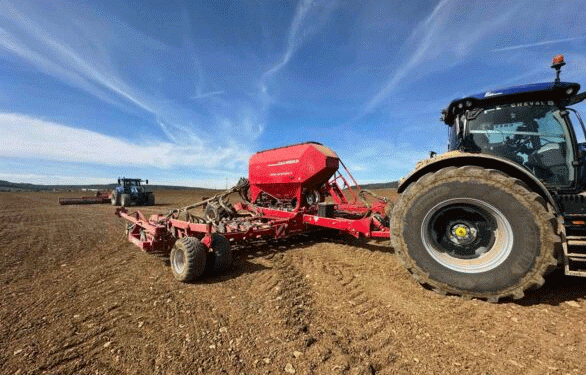France’s 2024 Winter Sowing: Soft Wheat Rebounds, Durum Wheat Hits 30-Year Low, Rapeseed Holds Ground
France, Europe’s largest grain producer, has kicked off its 2024-2025 cereal season with mixed signals: a welcome recovery in soft wheat area, continued challenges for durum wheat, and a stable yet uneven picture for winter rapeseed, according to the latest data released by Agreste, the statistics service of the French Ministry of Agriculture.
Soft Wheat (Blé Tendre) Makes a Comeback
After hitting a 35-year low in 2023, soft wheat sowing has bounced back by 10%, bringing the sown area to 4.57 million hectares (Mha)—slightly above the five-year average from 2020 to 2024 (+0.4%). The 2023 harvest was deeply affected by weather-related disruptions, which pushed production below 26 million tonnes for the first time since 1983, with a low average yield of 6.1 tonnes per hectare (61.0 q/ha) and reduced sowing area (4.15 Mha).
While the 2024 rebound is promising, caution remains. The saturation of soils in major regions such as Brittany, Normandy, Champagne, and Centre-Val de Loire due to excessive rainfall may compromise spring replanting and affect future yields.
Durum Wheat (Blé Dur): A Deepening Crisis
Durum wheat’s situation continues to deteriorate. The planted area has fallen 5.7% year-on-year, dropping below 200,000 hectares for the first time in 30 years, now at 198,000 hectares. This comes despite the French government’s Plan de Souveraineté launched in spring 2024 to boost domestic durum production, which has yet to show significant impact.
The decline is sharpest in key producing regions like:
- Midi-Pyrénées: -21%
- Centre-Val de Loire: -9%
Some pockets of growth persist, notably in:
- Pays de la Loire: +12%
- Poitou-Charentes: +9%
However, these increases are not enough to reverse the national trend.
Winter Rapeseed (Colza): Resilient but Regional Variations Persist
France’s rapeseed sowing area stands at 1.30 Mha, a 1.8% decline compared to 2023, but still 8.7% above the 2020–2024 average. This shows stability in a crop that has been under pressure in recent years due to pest issues and weather variability.
The drop in area is most notable in:
- Nord-Pas-de-Calais: -20%
- Brittany: -18%
- Pays de la Loire: -15%
Growth is observed in:
- Burgundy: +14%
- Midi-Pyrénées: +10%
- Grand Est: +4%
These trends reflect both agronomic resilience and regional shifts in crop preference due to local conditions and economic returns.
France’s winter sowing season for 2024 signals cautious optimism for soft wheat, but also persistent challenges for durum wheat despite government support efforts. Winter rapeseed shows signs of regional strength and national stability, highlighting the importance of localized strategies in adapting to climatic and market conditions. As France navigates another volatile crop year, farmers and policymakers must stay agile in managing weather, soil conditions, and crop diversification.
Error





